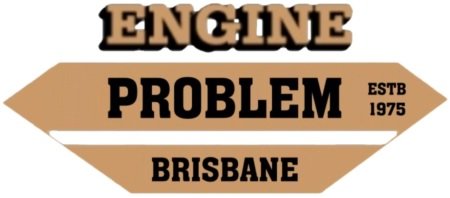Mains Engine Problem

Mains engine problem - FLOGGED
This condition is referred to as fatigue failure. As the name suggests it occurs when the bearing is subjected to abnormal working conditions. Excessive loads can occur directly from driving conditions. More commonly the excessive loads are generated due to incorrect ignition or injector timing, poor fuel or extreme temperatures. Constant full throttle use while these conditions exist will result in bearing fatigue failure or flogged main bearings. Overloading is a term used to describe internally generated forces that destroy the properties of the bearing.
Lugging an engine under extreme heavy conditions is a driver-induced cause of main bearing fatigue. If driver lugging is the cause of the main bearing failure usually the lower half of the bearing is more affected. (Lugging describes full throttle, heavy loads with low revs.) Consistent over reeving of the engine above what it was designed to do will result in flogged main bearings. Normally this condition would significantly effect the upper half of the main bearings. (Trucks often display this type of damage by using too low a gear as engine braking down steep inclines, the load weight causes the engine to rev above design specifications.)
: Every care has been taken in writing this information and procedures, but no responsibility can be excepted for errors, omissions or misuse of this information and procedures. The information available on this site is for your instruction only and cannot be copied for sale, © copyright 2020 UMR Engines www.engineproblem.com.au

Mains engine problem - PICKED UP / SEIZED
When engine bearings seize it is the end result of major damage caused by a breakdown in lubrication or assembly bearing clearances being under minimum specifications.
The clearance is referred to as "vertical oil clearance". As the lubrication breaks down and allows metal to metal contact between the shaft and the soft bearing material. Heat created by friction melts and welds bearing material on to the shaft. In a very short period the bearing and shaft can be destroyed.
This same scenario takes place during a dry start after re-assembly. Engines have to be primed to obtain oil pressure before the initial start after a rebuild. This involves cranking the engine until oil pressure is obtained. Removal of spark plugs in a petrol or removal of injectors or glow plugs in a diesel allows oil pressure to be obtained at starter cranking speed.
The results of a dry start may not always destroy the bearings immediately but even minor bearing contact with the shaft will damage the bearing enough to result in premature failure. (note well, if an engine will not turn freely by hand or under normal starter motor action the engine should be dismantled until the source of incorrect clearances is identified and repaired. Common causes of a tight engine are incorrectly fitted wick rear mains, misaligned con rods, dirty assembly, overlapped oil rings, insufficient ring end or back clearance etc, etc.) If crankshaft-bearing seizure occurs many thousands of miles after initial engine assembly the failure is usually related to a breakdown in lubrication. (ENGINE DRIVEN WITH LOW OIL LEVEL OR NO OIL PRESSURE)
: Every care has been taken in writing this information and procedures, but no responsibility can be excepted for errors, omissions or misuse of this information and procedures. The information available on this site is for your instruction only and cannot be copied for sale, © copyright 2020 UMR Engines www.engineproblem.com.au

Mains engine problem - WORN OUT
Even bearings operating under normal conditions will wear out and require replacement.
When main bearings wear out pre-maturely the main cause is contamination. This can occur over a long period and will be evident by very fine particle scratches in the bearing face. These scratches are a result of oil having contaminants such as carbon or silicon.
Complete elimination of these contaminants is impossible but will be reduced with shorter service intervals. If the scratches are severe, foreign material has found its way into the oil or the failure of another internal component has occurred. Quite often the contact position of the bearing has no bearing material left and has been reduced to the backing or underlay material.
The crankshaft will also have corresponding marks, as the foreign material is generally harder than the crank or bearing. If the bearings wore out (fine scratches) soon after a rebuild or recondition the cleanliness of the engine on assembly should be investigated.
Abrasive honing material is not successfully removed without the use of hot soppy water and soft brush. Petrol, kero or the like do not remove honing material from the hone marks or the rough casting of the crank webs and block. (A clean, oiled white cloth should be used as the test of honing material removal from the bore and a bright lead light for the rough castings.)
Main bearing shells that show uneven wear indicate main tunnel alignment problems or out of round main tunnels. Line bore the main tunnels to eliminate this cause.
: Every care has been taken in writing this information and procedures, but no responsibility can be excepted for errors, omissions or misuse of this information and procedures. The information available on this site is for your instruction only and cannot be copied for sale, © copyright 2020 UMR Engines www.engineproblem.com.au
